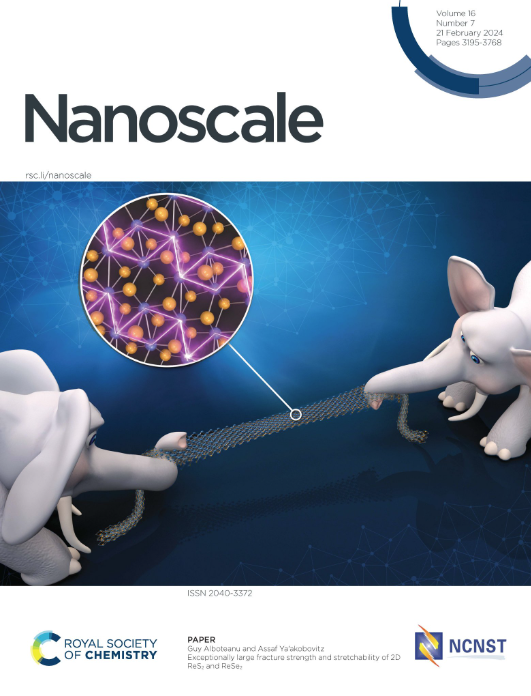Layer-Controlled Continuous MoS2 Growth using Spin-Coatable Metal Precursor Buffer
IF 5.8
3区 材料科学
Q1 CHEMISTRY, MULTIDISCIPLINARY
引用次数: 0
Abstract
Continuous large-area MoS2 growth holds significant potential for next-generation optoelectronic applications, yet achieving it efficiently and reproducibly with conventional chemical vapor deposition (CVD) process remains a challenge due to inconsistent precursor adsorption and non-uniform nucleation. In this study, we developed a pH-optimized metal precursor buffer that enables uniform spin-coating and facilitates continuous MoS2 growth. Sodium cholate (SC) acts as both a dispersant and a buffer, transforming molybdenum oxide into a dispersion-stable sodium molybdate (Na2MoO4)/SC complex. This complex forms a stable, uniformly spin-coatable dispersion at pH = 5.3, allowing it to establish hydrogen bonds with the SiO2/Si substrate. Additionally, increasing the complex concentration enhances precursor adsorption, enabling controlled MoS2 layer formation via CVD. Using this approach, we successfully fabricated continuous, centimeter-scale MoS2 films in varying layer numbers. Real-time observation reveals the growth kinetics of continuous MoS2 film in terms of contrast value, according to reaction time and temperature, indicating that the growth can occur at temperatures as low as 500 ºC. This stable, scalable, and reproducible spin-coating technique, utilizing a metal precursor buffer, offers a robust pathway for large-area transition metal chalcogenide structures, advancing the development of 2D material-based applications.利用可自旋涂层金属前驱体缓冲层控制MoS2的连续生长
连续大面积生长MoS2在下一代光电应用中具有巨大的潜力,但由于前驱体吸附不一致和成核不均匀,传统的化学气相沉积(CVD)工艺仍然是一个挑战。在这项研究中,我们开发了一种ph优化的金属前驱体缓冲液,可以实现均匀的自旋涂层,并促进MoS2的连续生长。胆酸钠(SC)作为分散剂和缓冲剂,将氧化钼转化为分散稳定的钼酸钠(Na2MoO4)/SC配合物。该络合物在pH = 5.3时形成稳定、均匀的可自旋涂覆的分散体,使其能够与SiO2/Si衬底建立氢键。此外,增加配合物浓度可以增强前驱体的吸附,从而通过CVD控制MoS2层的形成。利用这种方法,我们成功地制备了不同层数的连续的厘米级二硫化钼薄膜。实时观察显示,连续MoS2薄膜的生长动力学根据反应时间和温度的对比值,表明生长可以在低至500℃的温度下进行。这种稳定、可扩展、可重复的旋转涂层技术,利用金属前驱体缓冲,为大面积过渡金属硫族化合物结构提供了一条强大的途径,推动了二维材料应用的发展。
本文章由计算机程序翻译,如有差异,请以英文原文为准。
求助全文
约1分钟内获得全文
求助全文
来源期刊

Nanoscale
CHEMISTRY, MULTIDISCIPLINARY-NANOSCIENCE & NANOTECHNOLOGY
CiteScore
12.10
自引率
3.00%
发文量
1628
审稿时长
1.6 months
期刊介绍:
Nanoscale is a high-impact international journal, publishing high-quality research across nanoscience and nanotechnology. Nanoscale publishes a full mix of research articles on experimental and theoretical work, including reviews, communications, and full papers.Highly interdisciplinary, this journal appeals to scientists, researchers and professionals interested in nanoscience and nanotechnology, quantum materials and quantum technology, including the areas of physics, chemistry, biology, medicine, materials, energy/environment, information technology, detection science, healthcare and drug discovery, and electronics.
 求助内容:
求助内容: 应助结果提醒方式:
应助结果提醒方式:


